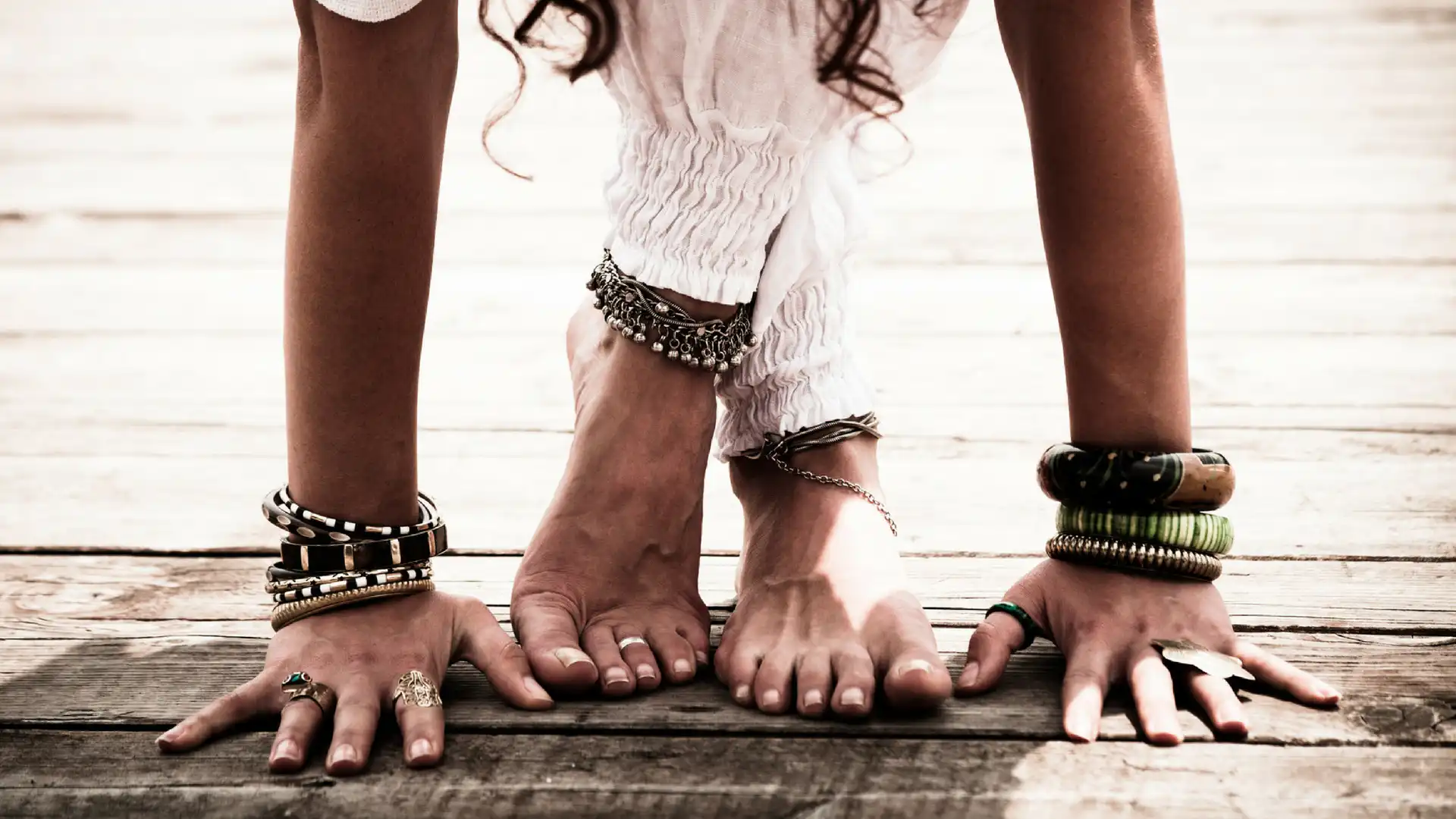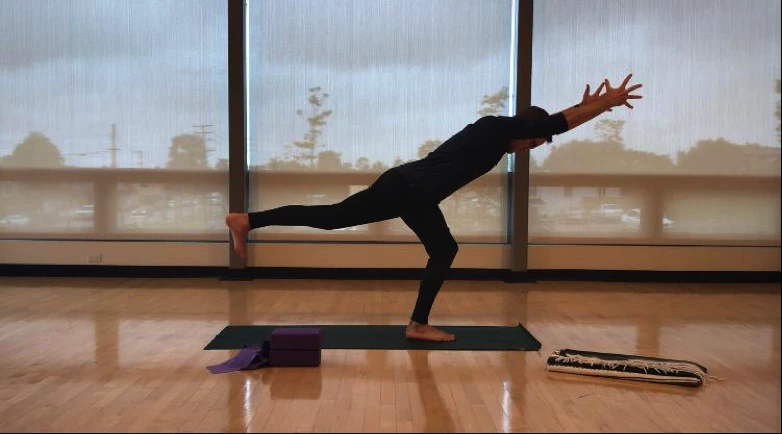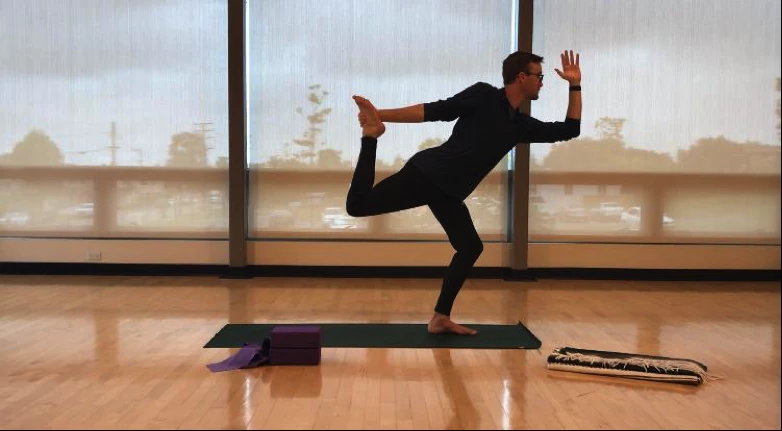Upgrade Your Yoga Practice With Ankle Asana

One thing we often do not hear much about in the Yoga world is the mobility & usage of our ankles. While many teachers and practitioners focus primarily on hips with some attention to knees and feet, the poor ankles barely get a second look.
This is a shame because ankle flexibility ties directly into how well our knees and hips will move!
Ankle Yoga: Ankle Awareness
It’s quite common to hear the cues “Point your Toes” or “Point your Foot” and “Flex your toes” or “Flex your foot,” when we are on our yoga mats. But have you ever asked: how far should my foot go to accomplish these movements well?
First off, unless the intention is to isolate your toes, which can actually be a healthy way to create mobility, these cues are usually intended to describe movement at the ankle concerning the two main surfaces of the foot–the plantar, or base of the foot, and the dorsal or top of the foot.
Think of the movement where the muscles are most active:
●Pointing your feet/toes = ankle plantarflexion (extension)
●Flex your feet/toes = ankle dorsiflexion (flexion)
The average human ankle has about 45 degrees of Plantarflexion (“Pointing”) and about 20 degrees of Dorsiflexion (“Flexing”). Pointing your toes is the easy one; It’s unlikely that you’ll be too restricted there. In my experience as both a Chiropractor and a yoga teacher, I’ve seen more restriction in movement on ankle dorsiflexion. Some of the yogis and patients that I’ve seen can barely go 5 degrees into ankle dorsiflexion, a limitation that can impose greater stress on other joints up the kinetic chain of the body.
Where problems often arise is with one or both knees. If your right ankle is restricted, your right knee will have to move more to compensate when you walk/run. Too much compensatory movement in a joint that was not designed to move much can often lead to inflammation from overuse and the potential for pain. (Exercise Physiologist Chuck Wolf in his book, Insights into Functional Training, has a great quote in regards to the roots of the source of a lot of knee pain: “The knee is the dumbest joint in the body, because it is highly influenced by foot motion and position, as well as by that of the hip.”)
With ankle inflexibility, a few culprits are at play:
-
Modern shoes – Many shoes are designed for fashion, not the human foot. Others have been engineered to take on a lot of the work the ankles should be doing. The extra cushioning, narrow toe box, and all the extra structure alters the movement of our foot. These shoes can actually impede the natural ability of the ankle and foot to move. The recent emergence of minimal shoe companies is meant to counter that trend and bring movement intelligence back to the body.
-
Neglect – Many people do not know how important it is to have ankle dorsiflexion. In the scheme of things, it seems a bit less interesting than the bigger players such as the hips, spine, or shoulders. But when we look a the biomechanics of a squat, ankle dorsiflexion is essential for optimum knee and hip alignment.
One big culprit that may surprise you is the cue we all hear too commonly on our yoga mats “Keep your knee over your ankle.” I hope I’m not the first to tell you this, but you can definitely let your knee go past your ankle. This cue and the fear that is often imposed with it is a bit unfounded. Think about it: Your knee must go over your toes every time you walk up a set of stairs! (Go ahead—try it!)
It’s true that when you are holding certain standing postures, it is ideal to place the knee over the ankle to help with the alignment of the pose in order to ensure that we do not place any undue stress on the structures of our knee joint. That said, it is also beneficial to occasionally move and train with your knee in every direction, such as in front of your ankle, to the inside of your ankle, and also bowed out to the outside of your ankle. Provided it does not hurt, a moment or two in a traditionally “misaligned” position can be beneficial to your yoga practice. This makes it possible to create strength around the knee joint in many angles, creating resilience rather than just strengthening in one direction.
Ankle Yoga: Restore Your Dorsiflexion
To restore some of your ankle dorsiflexion, as well as warm up your ankles for standing and balancing postures, here is one of my favorite movements: The W Lunge. In this version of the lunge, we glide our front knee over our ankle towards our toes in 3 different directions. This ensures that we get good pure ankle dorsiflexion as well as in two other vectors, ankle pronation & supination. Adding this movement to your warm-up will add stability, strength, and even a bit of fun to your standing poses.
Empowered Ankle Practice: A simple way to bring more ankle dorsiflexion into your asana practice is by bending your knee in your balance poses. Dancer’s Pose Natarajasana, Warrior III Virabhadrasana III, Half Moon Ardha Chandrasana, etc are all splendid examples of bending your knee to bring it over your toes (Ankle Dorsiflexion) & challenging your body in different areas. You’ll likely feel a lot more muscles in these modifications, so I hope you’re okay with feeling really strong!

Warrior III w/ a Bent Knee & Ankle Dorsiflexion

Half Moon w/ a Bent Knee & Ankle Dorsiflexion

Dancer’s Pose w/ a Bent Knee & Ankle Dorsiflexion
Adding ankle work to your practice will create strength, flexibility, and optimum range-of-motion. In other words, a fully functioning ankle that will help create stability and balance in your asana practice. Moreover, it’s also a great foundation for moving off the mat and into your daily life!
I hope that you enjoy, my friends.
Dr. Garrett Neill, aka Dr. Yogi Gare, is a Chiropractor and Yoga Teacher & Educator based in Southern California, whose passion is fusing Kinesiology into Yoga Asana and instructing yoga practitioners on how to better move and understand their bodies. He has been practicing yoga for over 12 years and teaching for almost 5 of those years. Dr. Neill is the author of the e-book: 5 Most Common Yoga Injuries & How to Avoid Them. He conducts Teacher Training Anatomy and Biomechanics lectures at teacher trainings, workshops, and yoga studios throughout California. For more of his videos and information check out his Instagram page: Dr.Yogi.Gare and Facebook Page: Dr. Yogi Gare




